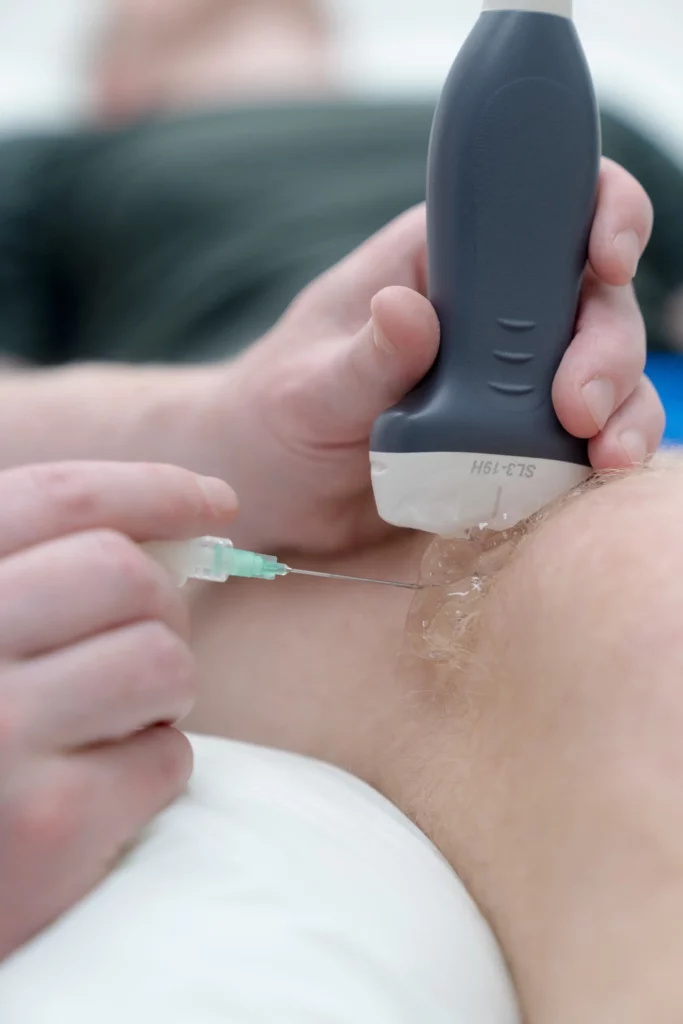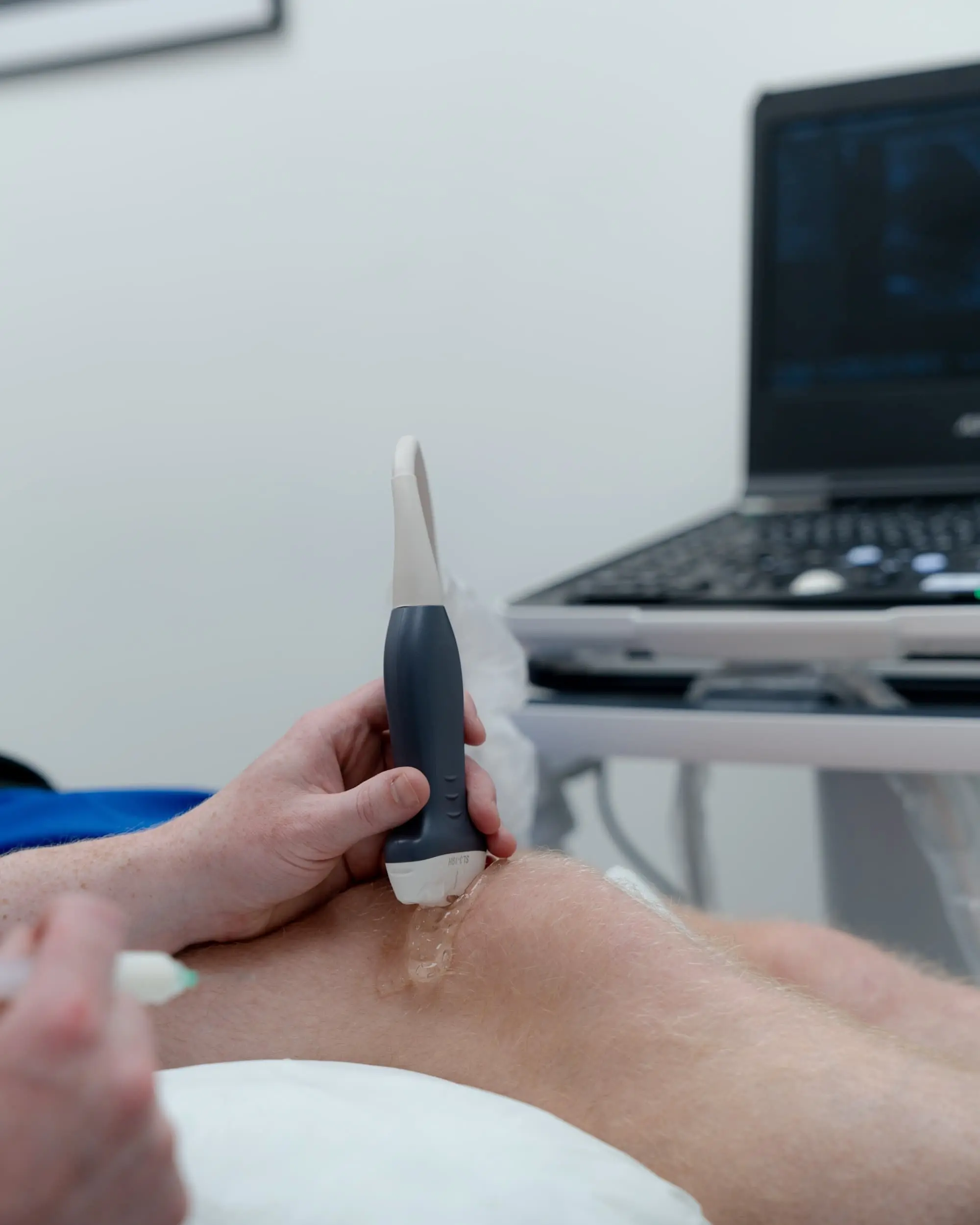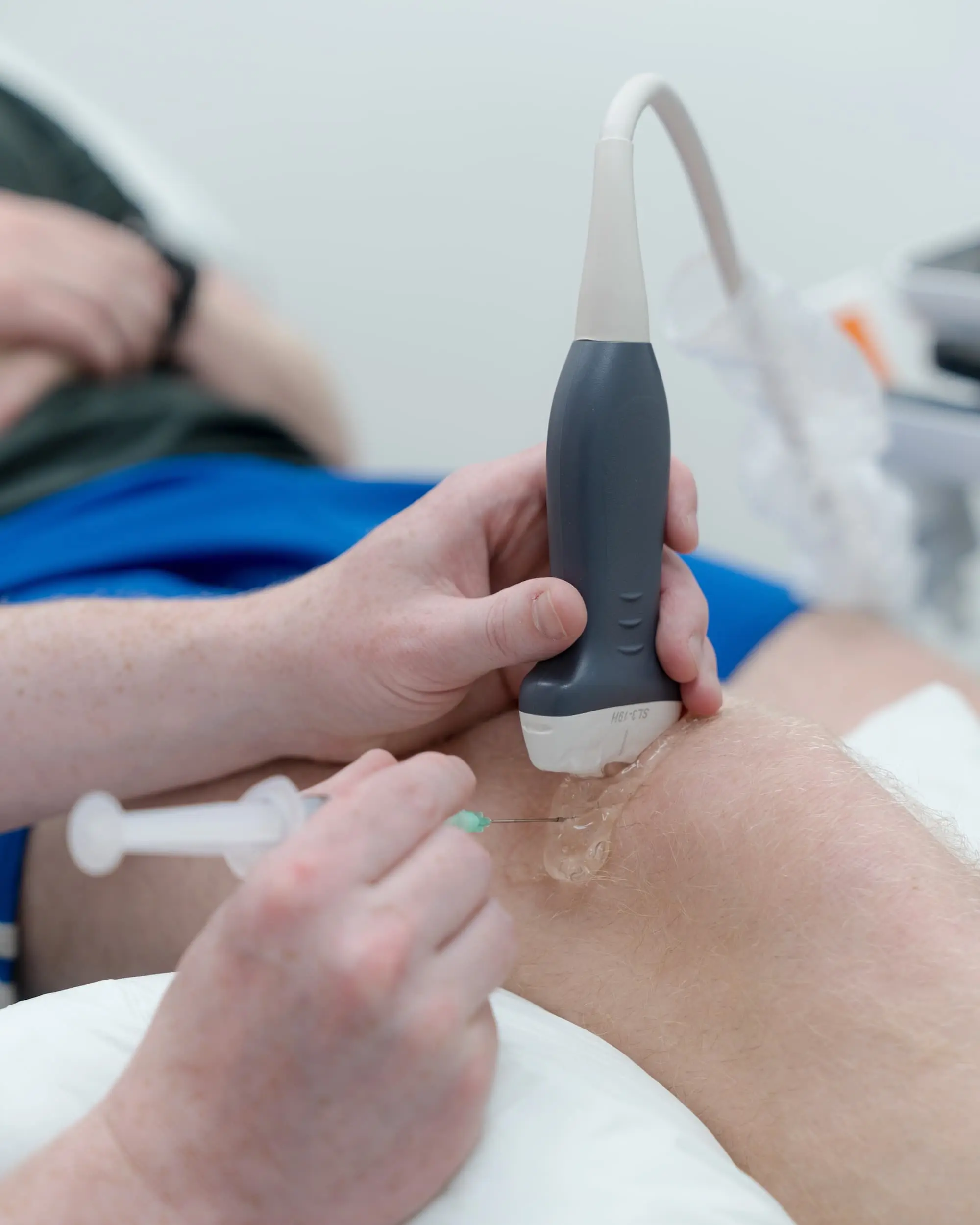
Hyaluronic Acid vs. Corticosteroid Injections: Which is Right for You?
If you’re struggling with joint pain due to osteoarthritis or tendon issues, hyaluronic acid (HA) injections and corticosteroid injections are two popular treatment options. Both can help relieve pain, but they work differently and last for varying lengths of time. Here’s everything you need to know:
How Do These Injections Work?
Hyaluronic Acid (HA) Injections
- Hyaluronic acid (HA) is a thick, gel-like substance that your body naturally produces. It’s found in high amounts in your joints, tendons, and connective tissues, where it plays a key role in keeping things moving smoothly.
- In healthy joints, HA acts like a natural lubricant and shock absorber. It helps the bones glide over each other without friction and protects the joint during movement.
- With osteoarthritis, the amount and quality of HA in the joint fluid decreases. This leads to dry, stiff, and painful joints because there’s less cushioning and more friction.
- HA injections work by replacing or boosting the natural HA in your joints. This helps restore lubrication, reduce pain, and improve flexibility and function. Many people notice they can move more freely and with less discomfort after treatment.
HA for Soft Tissues (Tendons & Ligaments)
- While HA is best known for treating joint problems, it can also be helpful for soft tissue conditions like tendinopathies (e.g., tennis elbow, Achilles tendinopathy).
- In these cases, HA is thought to reduce inflammation around the tendon and help the tissue glide more smoothly against surrounding structures.
- It also promotes hydration, tissue repair, and may help with pain reduction in areas where movement causes irritation or stiffness.

In Summary
- In joints, HA helps reduce pain, improve movement, and protect the cartilage.
- In soft tissues, HA may ease inflammation, help tendons move better, and support healing in overused or irritated areas.
- It’s a safe and non-surgical treatment option that can be used alone or alongside other treatments like physiotherapy or guided exercises.
Corticosteroid Injections
- Corticosteroid injections are a commonly used treatment for joint and soft tissue pain. They contain a strong anti-inflammatory medication that works quickly to reduce swelling, irritation, and discomfort.
- These injections are especially helpful for people experiencing a flare-up of joint pain due to osteoarthritis, bursitis, or inflammation in tendons or ligaments.


Fast and Effective Relief
- Corticosteroids are known for their rapid pain-relieving effects—many people feel better within a few days after the injection.
- They’re ideal for short-term relief, helping to settle inflammation so you can move more comfortably and continue with rehab or daily activities.
- They can be used in both large joints (like knees, hips, and shoulders) and smaller joints (like fingers or toes), as well as in soft tissues such as tendons and bursae (fluid-filled sacs that cushion joints).
What to Be Aware Of
Hyaluronic Acid (HA) Injections
- While corticosteroids are effective, they don’t fix the underlying cause of the problem. They simply reduce inflammation and pain.
- Repeated use over time—especially multiple injections into the same area—can potentially weaken cartilage, and in soft tissues, may lead to tendon weakening or rupture.
- That’s why they’re generally not recommended as a long-term solution, but rather as a short-term tool to help manage a flare-up or support a rehab plan.
In Summary
- Corticosteroid injections provide fast-acting relief from inflammation-related pain.
- They’re helpful for managing acute pain, swelling, or flare-ups in both joints and soft tissues.
- However, they should be used cautiously and not too frequently, especially in weight-bearing joints or around tendons, to avoid long-term tissue damage.
Different Types of Hyaluronic Acid Injections
There are several types of HA injections available, each designed to last for different durations and treat varying levels of osteoarthritis:
Popular HA Injection Options
Injection Type
Durolane
Ostenil Plus
Cingal
Sinovial / Sinogel
Durolane
A single-injection, high-strength HA treatment made using NASHA technology for longer-lasting relief. It’s ideal for patients seeking fewer injections with prolonged benefit.
How Long It Lasts:
Up to 12 months
Common Areas of Use:
Knee, hip, shoulder, ankle, base of thumb
Ostenil Plus
Non-animal derived HA with mannitol, an antioxidant that helps extend its effect. Suitable for a variety of joints, especially in early to moderate OA.
How Long It Lasts:
6 to 9 months
Common Areas of Use:
Knee, hip, shoulder, elbow, ankle, small joints (e.g., fingers, toes)
Cingal
A dual-action injection combining HA for joint lubrication and a corticosteroid for fast pain relief. Great for reducing inflammation while providing longer-term mobility improvements.
How Long It Lasts:
Immediate relief + up to 6 months
Common Areas of Use:
Knee (currently the primary approved site)
Sinovial / Sinogel
High-purity, biofermented HA injections used to improve joint movement and reduce pain. Available in different concentrations for custom use.
How Long It Lasts:
6 to 9 months
Common Areas of Use:
Knee, hip, shoulder, ankle, wrist, fingers
Hyaluronic Acid (HA) Injections
- Standard HA injections last between 6 and 12 months, depending on the product and the severity of osteoarthritis.
- Studies suggest HA injections work best for mild to moderate osteoarthritis rather than severe cases.
Corticosteroid Injections
- Traditional corticosteroid injections typically last 6 weeks to 3 months before wearing off.
- While effective for short-term pain relief, frequent steroid injections can weaken cartilage over time.


Pros and Cons: A Simple Breakdown
Hyaluronic Acid (HA) Injections
Corticosteroid Injections
Hyaluronic Acid (HA) Injections
How It Works
Restores joint lubrication and cushioning.
Speed of Relief
Takes a few weeks to start working.
How Long It Lasts
6 to 12 months, depending on the product.
Best For
Mild to moderate osteoarthritis.
Side Effects
Mild swelling or stiffness after injection.
Frequency of Use
Can be repeated every 6-12 months.
Corticosteroid Injections
How It Works
Reduces inflammation and swelling.
Speed of Relief
Works quickly, often within days.
How Long It Lasts
6 weeks to 3 months
Best For
Quick pain relief for inflammation.
Side Effects
Can weaken cartilage and tendons with repeated use.
Frequency of Use
Recommended limit of 3 injections per joint per year due to potential joint damage.
Which One Should You Choose?
- If you need fast pain relief, a corticosteroid injection may be best.
- If you want longer-lasting relief with fewer side effects, HA injections could be a better choice.
- Cingal may be a great option if you want the benefits of both in a single injection.
- In some cases, a combination of both treatments on different days may be used for better results.
At Motherwell Physio, we offer expert guidance and treatments tailored to your needs.
Get in touch today to discuss your options and see which injection is best for you!
